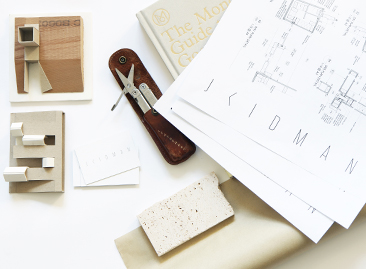
WHY ARCHITECTURE
Architecture is not just about spaces conducive to our physical needs, but also about spaces which are conducive to desirable frames of mind and spiritual states. The spaces we inhabit have been proven to be highly influential on our frame of mind. And if it is said that our thoughts become our words, which become our actions, which become our habits, which finally become our character, architecture’s responsibility is nothing less than the shaping of who we want to be, individually and collectively. In a well-designed space, we are the best version of ourselves: the most calm, the most open-minded, the most inspired.
More practically, architecture is about identifying, articulating, prioritising and cultivating successful outcomes. Many a shopping centre has failed, house gone unsold, cafe gone unvisited, and room sat unused due to poor design. Poor design or no design can be more costly than engaging an architect.
It is also about assurances, in a process which can be one of the larger time and cost commitments many people make. Some other industry service providers have less rigorous qualifications, no registration requirements, no onus to stay current, and no professional standards of competency in terms of civil law liability. Architects, however, must complete five years of education, several years of practical experience and exams, then maintain registration and associated insurance cover. Architects must also often comply with Continuing Professional Development (CPD) requirements, under which they continuously further their learning to maintain relevance and competency.
Critically, by engaging an architect not only for design, but also for delivery, you ensure the direction you have established isn’t undone by the execution.
An architect’s construction drawings are essentially a visual contract. Like other written contracts, such as a lease agreement providing certain rights from a landlord, or a workplace agreement providing certain entitlements from an employer, these drawings provide a contractual description of what a third party must provide to you in exchange for payment. And an architect’s subsequent contract administration service means you’re not the one constantly checking whether that contractual description matches the constructed result.

HOW IT WORKS
We understand the architectural process is not a frequent undertaking in many people’s lives.
Simply speaking, it involves the following stages:
- Schematic Design (SD). The initial period when all options are still open, and the project may still take several directions. This stage’s objective is a consensus about which single direction to pursue.
- Design Development (DD). A single design is further developed and tested, with the additional input of other specialist consultants like structural engineers and energy raters. This stage’s objective is typically preliminary cost input (quantity surveyor), and a required authority approval (planning permit or development application).
- Construction Documentation (CD). Drawings and documents are prepared to inform a firm construction cost from a builder, and a building permit for construction.
- Contract Administration (CA). An architect prepares contracts between builder and client, then oversees both parties’ responsibilities under the contract via site meetings, day-to-day correspondence with the builder about site matters, and assessing the builder’s claims for payment.
Timing-wise, the combination of stages will vary depending upon client, project and context – a cafe or shop fitout could be mere months of design and approvals, with several weeks of construction, but a new family house could be a year or more of design and approvals, with the same again for construction. In any case, engaging an architect is often a longer commitment than engaging other professionals like a solicitor or surgeon. So beyond simply being confident in an architect’s technical capabilities, the best outcome is when you and your architect share some common philosophical ground and outlook on life.
Cost-wise, some architects work backwards from a percentage of the anticipated construction cost (somewhere from 6-12%, depending upon complexity and other factors), to arrive at a fee they distribute across the various stages mentioned above. Other architects, ourselves included, work forwards by trying to estimate the exact time and resources required for each stage, and arrive at a fixed lump-sum fee for each stage. Beyond that, an architect can simply be paid on an hourly rate (time charge) like any other professional. We suggest that you don’t consider an architect as an optional ‘extra’ on top of your project budget, but rather part of your budget – a $450K house plus $50K of architectural, engineering and other professional consultant fees will always be a better outcome than a $500K house with no architect.

GETTING STARTED
We’d love to hear about your design problem – big or small – and we’d love the opportunity to solve it for you.
It’s as easy as calling us for a chat or meeting for a coffee, and setting up a no-obligation site visit.
From there, we look forward to answering all your questions about embarking on a design journey with us, and hopefully continuing on that journey with you.
